Artist William B. Streett recently sent me these two beautiful silk screen prints of the monumental brasses of Sir Thomas Boleyn and Margaret Cheyne, found in St Peter’s Church, Hever. William sells the silk screen prints of Thomas Boleyn’s brass for US $100, plus shipping (about US$10 for shipments within the US and US$20 for shipments outside the US). They really are very lovely and of very high quality. For a detailed description of the process William uses to make the prints please click here. If you are interested in purchasing a print, please visit William’s website: http://www.englishbrassrubbings.com or email him at william@EnglilshBrasssRubbings.com.
I’ll leave you now with William’s description of the monumental brasses.
THE MONUMENTAL BRASSES OF SIR THOMAS BULLEN AND MARGARET CHEYNE
William B. Streett
Hever is a village and civil parish in the Sevenoaks District of Kent, England, located on the River Eden. St Peter’s Church at Hever houses the monumental brass of Sir Thomas Bullen (Boleyn), the father of Anne Boleyn (second wife of Henry VIII) and grandfather of Queen Elizabeth I. It also houses the brass of Margaret Cheyne (1419), one of the most beautiful brasses from the early 15th century.
The monumental brass of Sir Thomas Bullen is 60 inches long and 21 inches wide. He is wearing the collar, mantle, garter, badge, and hood of the Order of the Garter, which remains to this day the highest order of chivalry in England. His feet are resting on a gryphon — a legendary creature with the body, tail, and back legs of a lion; the head and wings of an eagle; and an eagle’s talons as its front feet. An English inscription above the brass reads:
“HERE LIETH SIR THOMAS BVLLEN
KNIGHT OF THE ORDER OF THE GARTER
ERLE OF WILSCHER AND ERLE OF ORMVNDE WICHE DECESSED THE 12 DAI OF MARCHE IN THE IERE OF OUR LORDE 1538”
The order of the Garter was founded in 1348, during the reign of Edward III, and is dedicated to the image and arms of St. George as England’s patron saint. The crest on his left shoulder and the garter at his left knee are engraved with the motto of the order, “Honi soit qui mal y pense” (Shame to him who thinks evil of it). A popular legend concerning the motto involves the “Countess of Salisbury” who, while dancing with the king at a court ball in Calais, had her garter slip from her leg. When the surrounding courtiers sniggered, the king picked it up and put it on his own leg, exclaiming, “Honi soit qui mal y pense.”
By the 16th century, when the brass described here was created, brass engraving had lost much of its earlier beauty and simplicity, with extensive shading added to give the illusion of depth. In his book, The Picture Book of Brasses in Gilt (John Baker Publishers, Ltd, 5 Royal Opera Arcade, Pall Mall, London SW1, 1971) Henry Trivick describes the brass of Sir Thomas as, “An excellent descriptive brass, but a dull overworked engraving.” It is, nevertheless, an impressive image.
The brass of Margaret Cheyne (1419), with its elegant symmetry, is one of the most beautiful of the surviving brasses from the early 15th century. The full image in the silk screen print, including the angels and the inscription, is 47 inches long and 22 inches wide, and the cloth on which it is printed is 60 inches by 28 inches. Margaret wears a long gown, tight fitting in the upper body, with a cloak, open at the front and tied with a cord at the breast. Her hair is attached to nets, covering the ears and extending outward and upward, with a veil that hangs down to her shoulders at the sides and back. Two angels hold the embroidered pillow behind her head, and a small dog is at her feet. The Latin inscription translates as follows,
“Here lies Margaret, once the wife of William Cheyne, who died on the 23rd day of the month of August, in the Year of Our Lord 1419, on whose soul may God have mercy Amen.”
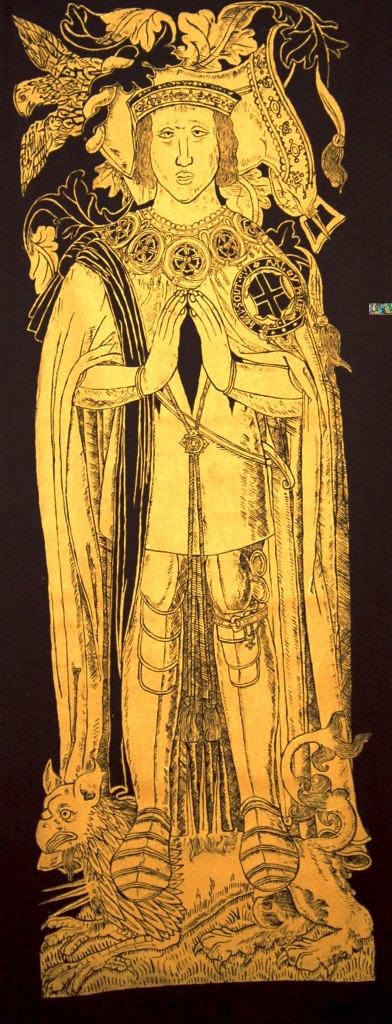
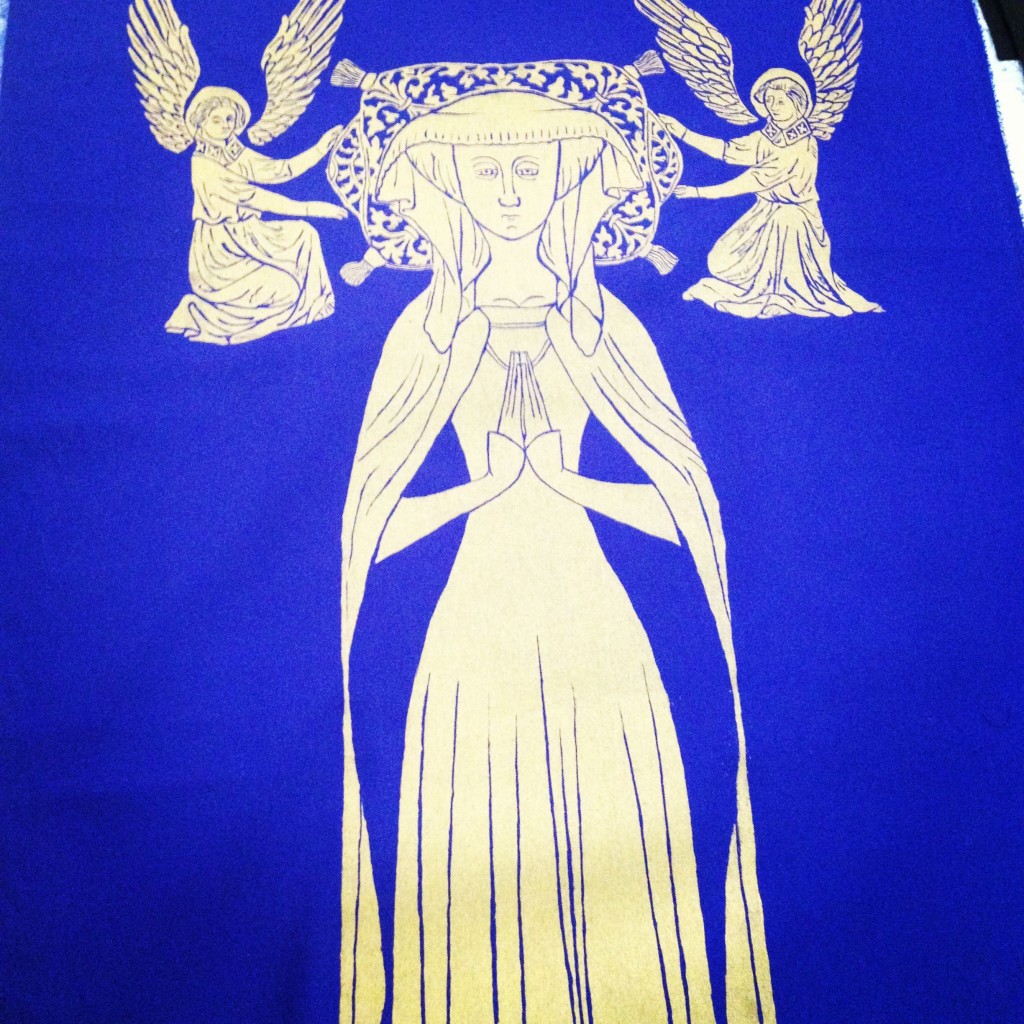
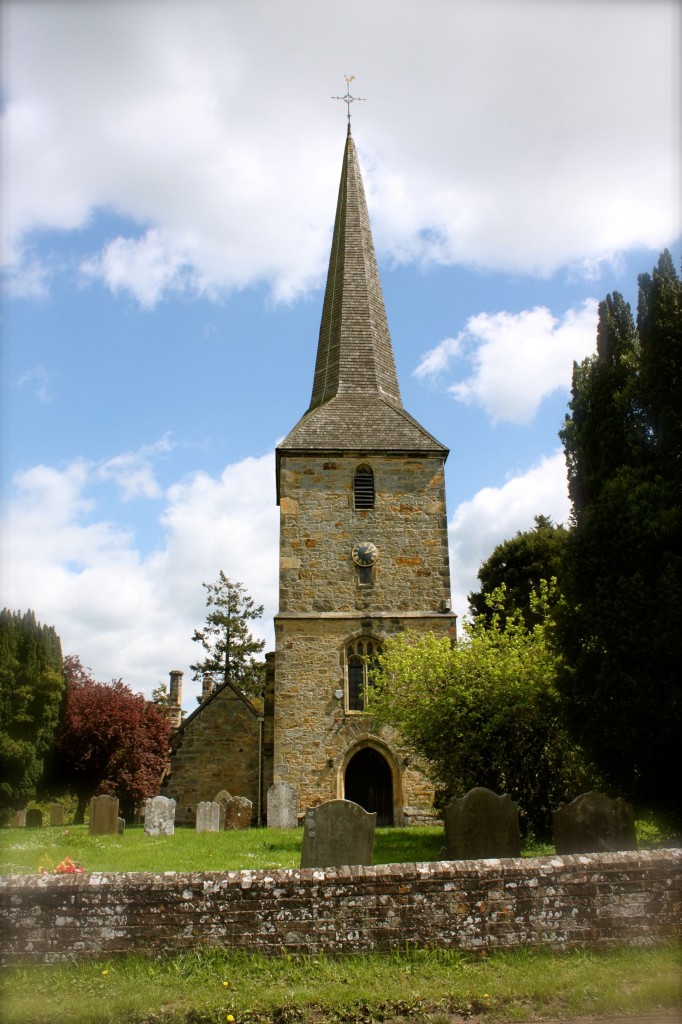

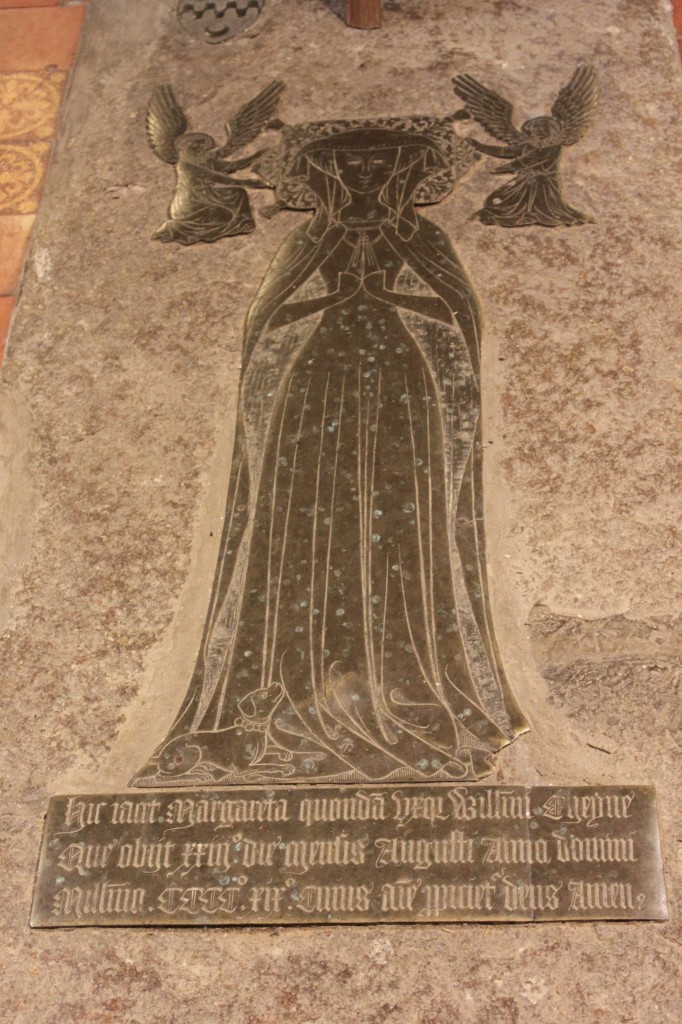


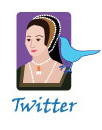




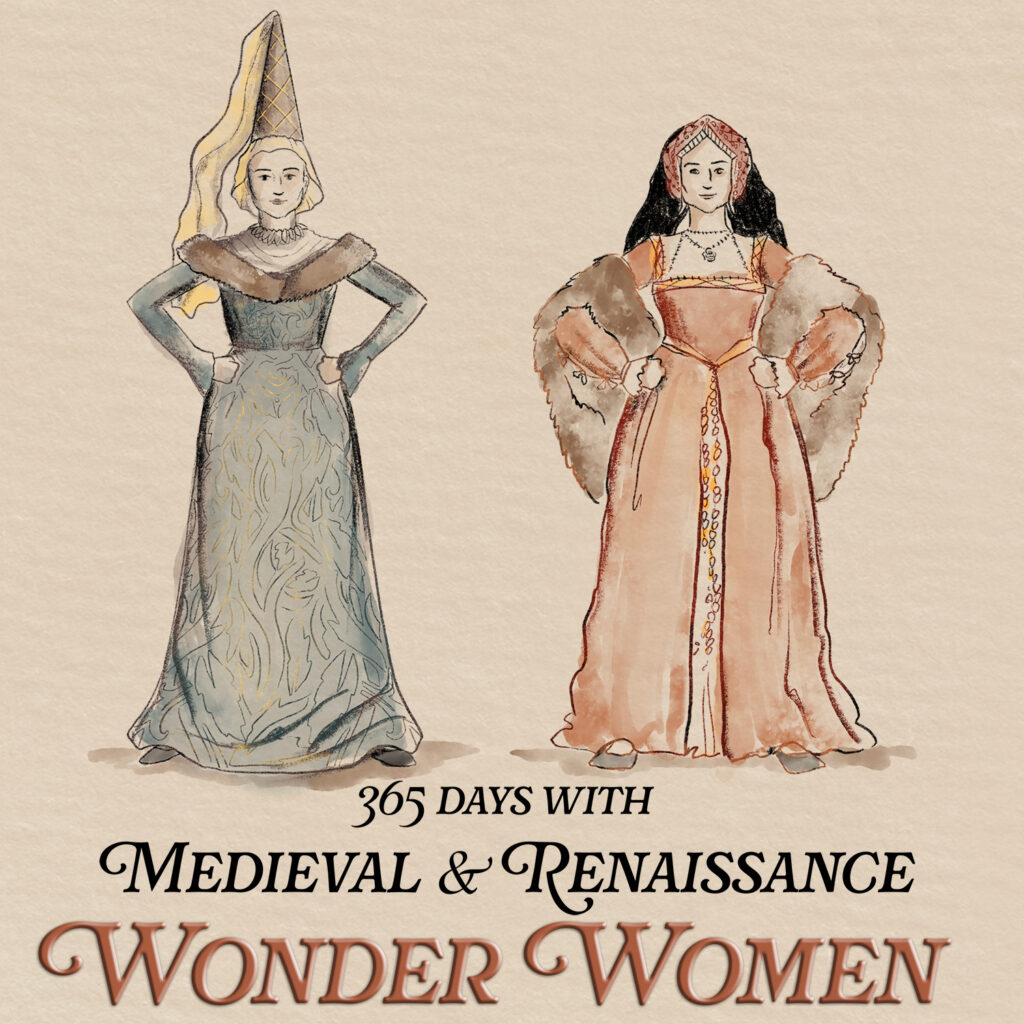
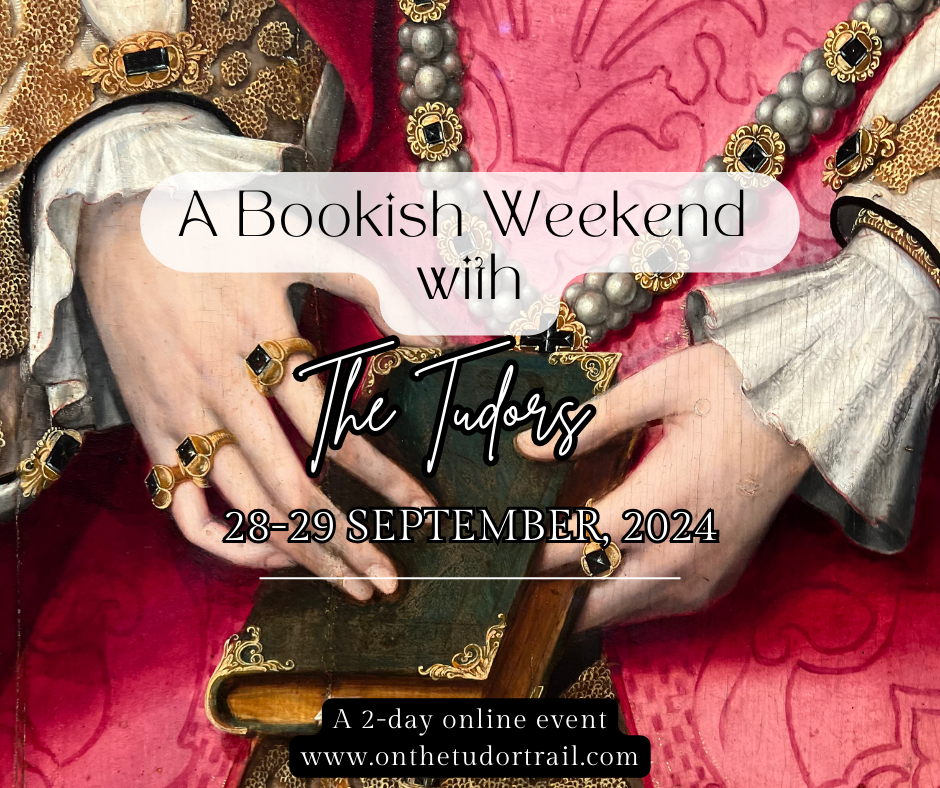
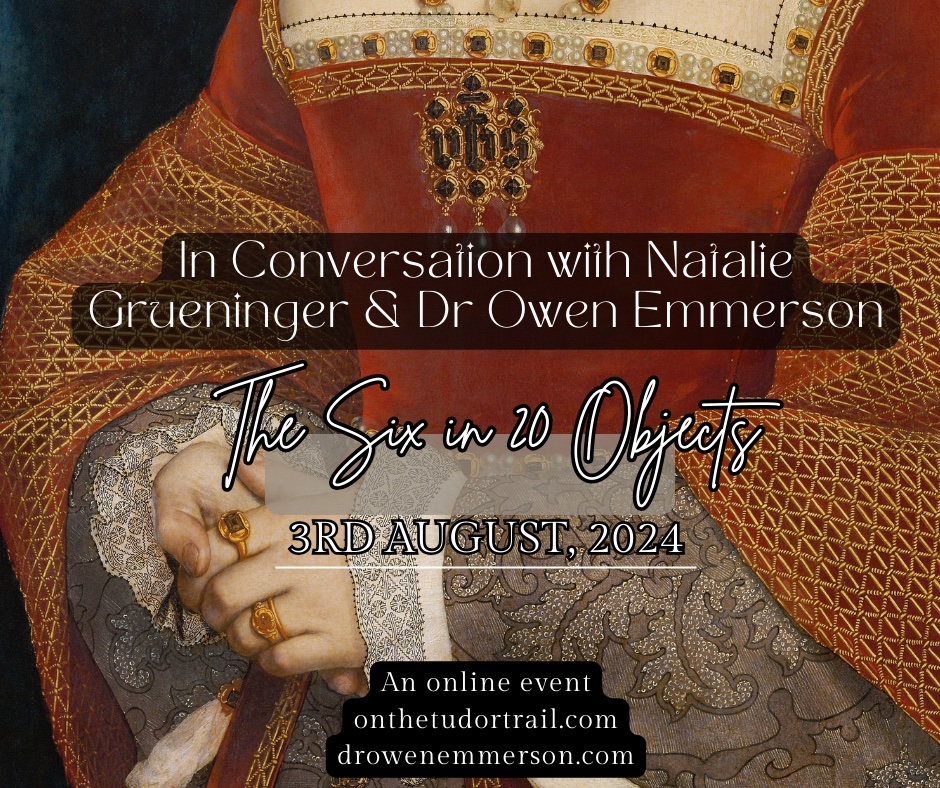






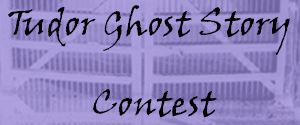

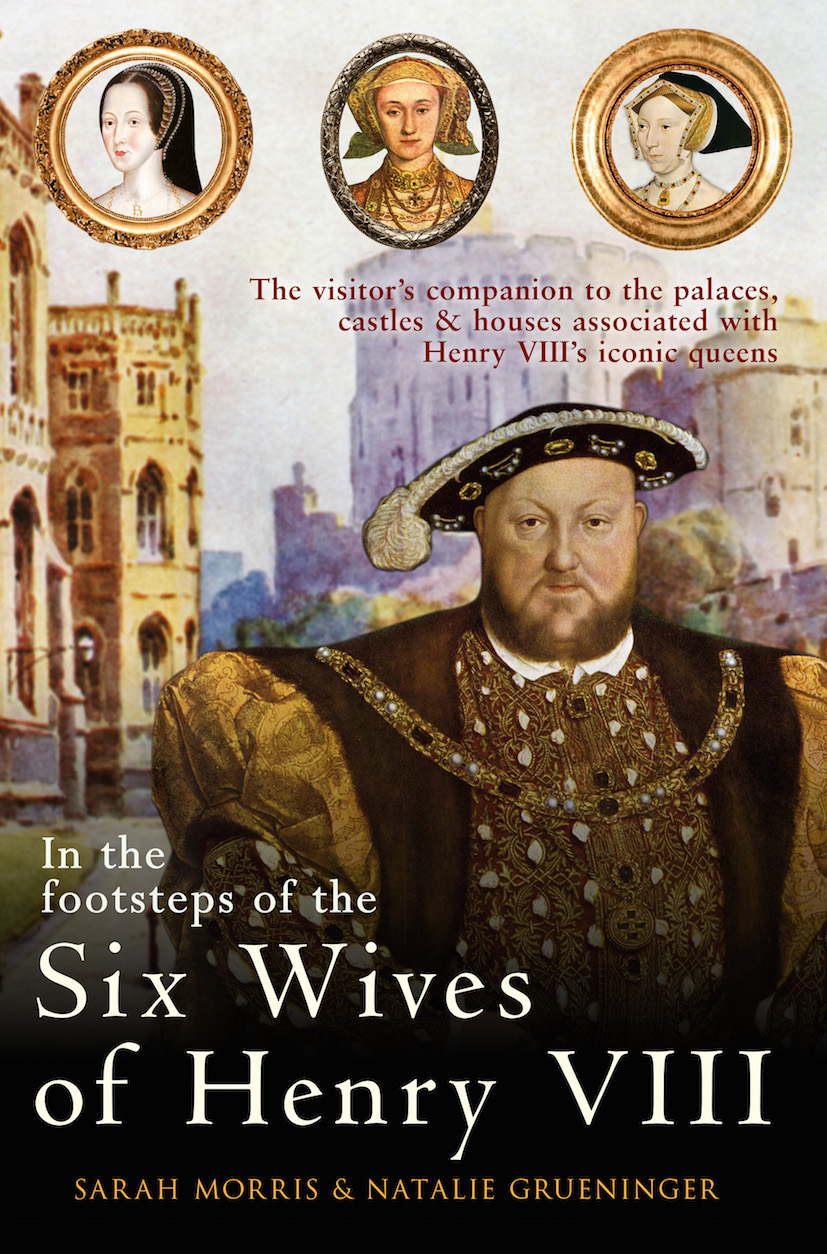
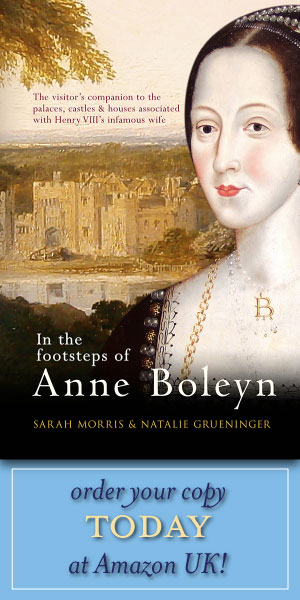


Visited St Peters Hever today (Sun 7 June 15) and Sir Thomas’ brass was missing from the Boleyn Chapel. Has it been stolen, removed for cleaning or safety?
Goodness! I don’t know. Let’s hope it has just been removed for conservation/cleaning. I will try and find out.
I wonder if someone can help? The brass on the tomb of Sir Thomas Bullen dates the Bullen tomb to around 1538, but the main part of the chest tomb is a little older. To me me the architecture and design suggest a date closer to the 14th century than 16th century, and such a date would explain the dire condition of the tomb.
The stonework is excessively warn and why and when were the bricks added..
The carving suggests that this had previously been used for a very illustrious burial, so where had it come from? Was it from the older part of the Church or was it taken from one of the nearby Abbey’s despoiled by Cromwell and King Henry? Is there any indication who the original owner might have been?
We have internet photos of the side of the Bullen tomb showing the brick repair, but there are no clear photos of the shield at the end of the chest tomb. Does this shield relate to Sir Thomas’s burial or does this shield relate to an earlier use of the tomb?. Could someome post a photo of the shield?
I have questioned where the tomb of Thomas Bullen originally came from. as It appears to pre-date Sir Thomas’s burial by many generations.
Does any know when the iconic Rose portrait of Anne Boleyn was first displayed at Hever Castle?
There appears to be a lack of information concerning the provenance of this iconic painting of the Queen of Hever. Where did it come from?
Hi I have a question, is Margarete Cheyne related to Thomas Cheyne who’d was in charge of the cinque ports for Henry VIII and from Shurland Hall Isle of Sheppy ? Any information would be great thanks